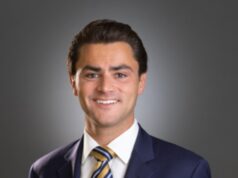Attorney General Sessions Delivers Remarks at “West Virginia on the Rise: Rebuilding the Economy, Rebuilding Lives” About the Opioid Epidemic
WASHINGTON – (RealEstateRama) — Thanks for that kind introduction, Matt and thank you for your leadership at ACU— one of America’s oldest and largest conservative grassroots organization. Of course I also want to congratulate your family on Mercedes’ return to the White House. I am confident that she is going to do a great job communicating President Trump’s ambitious agenda for this country.
Thank you for your leadership in hosting this discussion and for allowing me to participate. We are in the midst of a daily opioid crisis and now a months long deadly epidemic. Make no mistake, however, combatting this poison is priority for President Trump and his administration, and you can be sure that we are taking action to address it.
In fact, President Trump recently declared this week “Prescription Opioid and Heroin Epidemic Awareness Week,” in order to bring even greater attention and scrutiny to the devastation caused by these highly addictive and lethal substances.
In making this declaration, the President has stated unequivocally to all who are suffering from addiction, seeking treatment, or who are in recovery: we stand with them, we are praying for them, and we are working every single day to help them.
Let’s be clear about what we are up against—we must face the stark reality. Today, we are facing the deadliest drug crisis in American history. In 2015, a record 52,000 Americans lost their lives to drug overdoses – 1,000 American lives every week. That’s more than the population of Charleston.
More Americans died of drug overdoses than died from car crashes or died from AIDS at the height of the AIDS epidemic. For Americans under the age of 50, drug overdoses are now the leading cause of death.
And, unfortunately, this was not a blip. The numbers for 2016 look even worse. Based on preliminary data, approximately 64,000 Americans lost their lives to drug overdoses last year.
That would be the highest drug death toll and the fastest increase in that death toll in American history. And every day this crisis continues to grow, as more than 5,000 Americans abuse painkillers for the first time.
This crisis is driven primarily by opioids – prescription painkillers, heroin, and synthetic drugs like fentanyl.
In 2015, opioids were responsible for most of the fatal overdoses in this country, killing more than 33,000 Americans – quadruple the number from 20 years ago. Last year, there were 1.3 million hospital visits in the United States related to these drugs.
As you all know, West Virginia has been hit especially hard.
According to the Centers for Disease Control and Prevention, West Virginia had the highest rate of drug overdose deaths in 2015 at nearly three times the national average.
In West Virginia, more than four out of five overdose deaths in 2016 were related to opioids.
The top four counties in America for opioid overdose deaths – Wyoming, McDowell, Boone, and Mingo – are all in West Virginia, and six other counties in the state fall into the top 20.
These trends are shocking and the numbers tell us a lot– but they aren’t just numbers. They represent moms and dads, brothers and sisters, neighbors and friends.
They represent unique, irreplaceable people, and fellow Americans.
They represent the 26-year-old pregnant mother who overdosed here in Charleston, accidentally killing both herself and her unborn child. They represent the couple who were found dead in their Kernville home a week after they had overdosed on heroin.
Their five-month-old daughter was found with them—dead from starvation and dehydration.
I recently had the opportunity to address the National Alliance for Drug Endangered Children, it was during this event that I was able to view this crisis through the eyes of a child—just imagine for a moment you are a helpless toddler who cries for their mother to wake up and she never does, or the poor infant that is wailing in the NIC-U due to opioid withdrawal—you just entered this world and are already suffering and for sins you did not commit.
We must make progress for those currently afflicted and for those who have yet to be caught in its grips.
Drug dealers across America are profiting off of this crisis. They are making the drugs stronger, and more deadly, by lacing heroin with fentanyl – a drug 30 to 50 times more powerful than heroin–and carfentanyl, a synthetic opioid 100 times more potent than that.
Carfentanyl is so powerful that its main legal use is to tranquilize elephants. With these synthetic compounds on our streets, drugs are now more powerful, more addictive, and more dangerous than ever.
These drugs put bystanders and first responders at risk, too.
Exposure to even a few grains of fentanyl can be fatal. A police officer in Ohio suffered an overdose after brushing a white powder he got on his uniform after what had been a routine traffic stop. And another officer in New Jersey was rushed to the emergency room after a puff of fentanyl came up while removing the air from a plastic bag.
I know that ACU is committed to growing our economy and shrinking our government budgets. Drug abuse does the exact opposite: it shrinks our economy and it grows our government budgets.
It is estimated that prescription opioid addiction costs our economy some $78 billion a year and that illicit drugs cost us a total of about $193 billion a year.
Drug abuse reduces the productivity of our workers, eliminates many otherwise qualified individuals from our work force due to addiction and criminal records, and puts a strain on health care programs like Medicaid. It is filling up our emergency rooms, our foster homes, and our cemeteries.
Every limited-government, pro-growth conservative needs to understand that.
The point is that our country is served by having more Americans healthy, drug free, and ready to work. Every addicted American reduces the productivity of America.
But sadly, even with this record death toll, exorbitant costs, and new tragedies taking place every day, some people in our culture and in government continue to say that drug abuse is no big deal or merely a private matter. That’s wrong.
To confront a crisis of this scale, we must have a comprehensive antidote to the problem. I believe the solution contains three pillars: prevention, enforcement, and treatment.
Treatment is important. In some cases, treatment can help break the cycle of addiction and crime and get people back on their feet and out of the clutches of drugs.
But treatment cannot be our only policy. Treatment often comes too late. By the time many people receive treatment, they, their families, and communities have already suffered terribly. The struggle to overcome addiction can be a long process – and it can fail. Sadly, it often does fail.
The best long-term solution is prevention. The best action is not to start. Just say no.
And prevention is what we at the Department do every day – because law enforcement is prevention. Enforcing our laws helps keep drugs out of our country, drive up their price, and reduce their purity, availability, and addictiveness.
I want to give special credit to your Attorney General Patrick Morrisey who you will hear from later. He has been tireless in his efforts to combat this crisis from all fronts. We have a unique partnership between his office and our U.S. Attorney for the Northern District to combat drug trafficking and I’m told this initiative has netted a total of eight convictions since its implementation in 2015.
His office has filed lawsuits against all culpable parts of the pharmaceutical supply chain. They are enforcing the law against physicians, pharmacies, wholesalers and manufactures. And that is exactly the approach you need.
We’ve had some successes at the Department of Justice as well. Two months ago, the Department announced the largest health care fraud takedown in American history.
DOJ coordinated the efforts of more than 1,000 state and federal law enforcement agents to arrest more than 400 defendants.
More than 50 of the defendants in these cases have been charged with opioid-related crimes, which means this was also the largest opioid-related fraud takedown in American history.
Just a week later, we announced the seizure and take down of AlphaBay— the largest dark net marketplace takedown in history. This site hosted some 220,000 drug listings and was responsible for countless synthetic opioid overdoses, including the tragic death of a 13-year old in Utah.
These achievements show the progress that we’ve made, but we have a lot left to do.
One area where we will continue to improve is stopping over-prescribing. This was one of the major reasons that this drug epidemic began in the first place.
Consider this: in the 20 years from 1991 to 2011, opioid prescriptions nearly tripled in the United States. And in West Virginia, there were more opioid prescriptions than people in 2015.
To help fight overprescribing, I announced last month that we will allocate new resources to find and prosecute the fraudsters who help flood our streets with drugs.
The first new resource is a data analytics program at the Department called the Opioid Fraud and Abuse Detection Unit.
This data analytics team will help us find the tell-tale signs of opioid-related health care fraud by identifying statistical outliers.
They can tell us which physicians are writing opioid prescriptions at a rate that far exceeds their peers; how many of a doctor’s patients died within 60 days of an opioid prescription; the average age of the patients receiving these prescriptions; pharmacies that are dispensing disproportionately large amounts of opioids; and regional hot spots for opioid issues.
Fraudsters might lie, but the numbers don’t.
I have also assigned 12 experienced prosecutors to focus solely on investigating and prosecuting opioid-related health care fraud cases in a dozen “hot-spot” locations around the country – places where they are especially needed. That includes Southern West Virginia.
These prosecutors, working with the FBI, DEA, the Department of Health and Human Services, as well as our state and local partners, will help us target and prosecute doctors, pharmacies, and medical providers who are exploiting this epidemic to line their pockets.
Just last month, a doctor in Raleigh County was sentenced to 20 years in prison for running a pill mill. He admitted that in just one day, he wrote nearly 400 prescriptions – totaling more than 22,000 oxycodone pills – without actually seeing the 270 patients who received them.
Just imagine the consequences: new addictions started, lives destroyed, families torn apart.
We all paid a price for his crimes. But thanks to the hard work of people at the Department of Justice, he has been held to account for his crimes.
I believe that the Department’s new resources and new efforts will bring more criminals to justice, and ultimately save lives. And I’m convinced this is a winnable war.
Through prevention, enforcement, and treatment, we can make this country safer for every American.
Thank you and God bless you.




